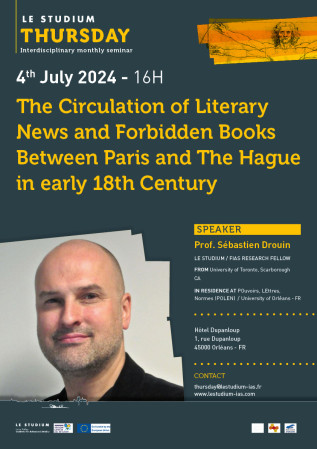Kenji Shinozaki received a Ph.D. in Engineering at Nagaoka University of Technology in 2013. He was an Assistant Professor at Nagaoka University of Technology from 2013 to 2016. Since 2016, he has worked at National Institute of Advanced Science and Technology (AIST) as a senior researcher. He is also associate professor as principal investigator in Osaka University since 2022. His current research interest includes development of new functional glasses and glass-ceramics for optical and mechanical properties.
I am an Earth scientist by education, an experimental volcanologist, and a materials scientist by profession. I received my PhD from the University of Roma Tre in 2012, focusing on magma degassing. In 2013, I joined Ludwig Maximilians University of Munich until 2016, studying silicate melts and volcanic processes. I worked as a Research Associate at the University of Bristol until 2018, then at Clausthal University of Technology until 2020. I was a Senior Scientist at Bavarian Research Institute of Experimental Geochemistry and Geophysics, University of Bayreuth until 2021.
Coordinator of the consortium: Dr Christophe Baltzinger
Forest Ecosystems Research Unit (EFNO)-FR
Born 23.10.1965 in Berlin, Germany. Study of materials science specializing in glasses at TU Berlin under Prof. Brückner, graduating with degree Dipl.Ing. in 1992 (“Production and optimization of C-fiber reinforced glass ceramics based on cordierite and bariumosumilite”). Subsequently worked on a research project at the Federal Institute for Materials Research and Testing (BAM), Division Glass, on the subject "Surface nucleation of silicate glasses of the stoichiometry of cordierite and diopside" (doctoral thesis 2001, TU Berlin). Since 1992 scientific employee at BAM.
He received his PhD from Nagaoka University of Technology in 2004. He then worked as a researcher at Mitsubishi Electric Corporation, and since 2007, he has been engaged in research on glass ceramics as an assistant professor at Nagaoka University of Technology. He was promoted to Associate Professor in 2014 and to Professor in 2023. He is working on the creation of ionic conductors and all-solid-state batteries with oxide glasses and glass-ceramics.
Sodium ion conductive glass-ceramics processed by laser-based powder bed fusion technology
Thomas Höche's research interests concern nanostructuring of inorganic materials as well as their characterisation using cutting-edge techniques of microstructure diagnostics. Special emphasis is laid on the development of novel, laser-based approaches to specimen preparation, the fabrication of polymer-based microoptics, and the accelerated development of glasses and glass ceramics fostered by accompanying micro- and nanostructure characterization.
I received my PhD degree, speciality Materials Science and Engineering, from the University of Grenoble (France) in 2004. After three years of experience in different laboratories in France, I joined the CNRS at the Groupe de Physique des Matériaux (GPM) laboratory in Rouen (France) in 2007 and then the Conditions Extrêmes Matériaux : Haute Température et Irradiation (CEMHTI) laboratory in Orléans (France) where I still am since 2013.
Gerwin Puppels is the founder and managing director of RiverD International (www.riverd.com), which develops instruments and diagnostic applications, based on Raman spectroscopic tissue e analysis. An example is the gen2-SCA family of in vivo skin analysis instruments.
Dr Sebastian Polak is also a Senior Scientific Advisor in Certara UK, part of an international Certara company leading the team developing non-oral in silico absorption models. Dr Polak also holds tenure position at the Faculty of Pharmacy Jagiellonian University Medical College, Krakow, Poland (Professor of Biopharmacy) where he leads a multidisciplinary team of scientists and engineers working on applying various modelling and simulation approaches in drug development.
Always late, lacks assertiveness, likes motorcycles theoretically and even more in real life.


